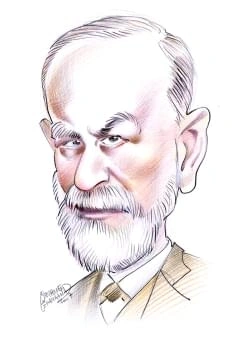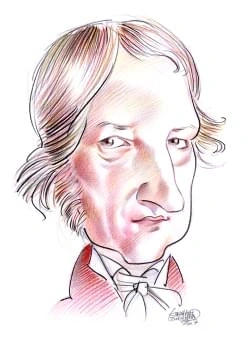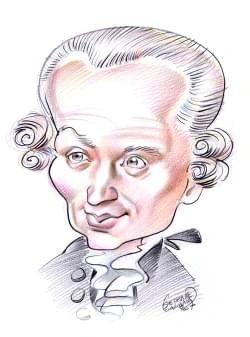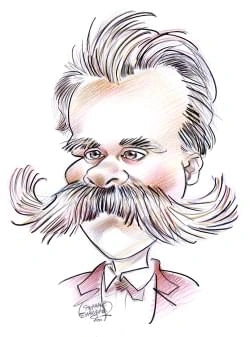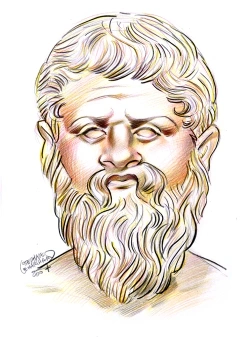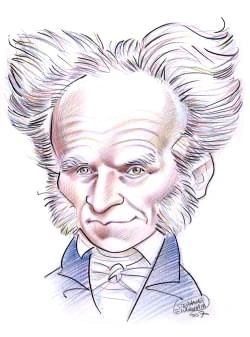838 résultats pour "early"
-
Montana - geography.
(191 sq mi), is Montana’s largest lake, and the largest natural freshwater lake in the contiguous states west of the Mississippi River. C Climate Climatic regions in Montana coincide roughly with the two major physiographic regions. In western Montana, as compared with the eastern plains area, winters tend tobe milder while summers are cooler. Precipitation is more evenly distributed throughout the year in the west, and it is cloudier and somewhat more humid in all seasons.In addition, the grow...
-
Montana - USA History.
(191 sq mi), is Montana’s largest lake, and the largest natural freshwater lake in the contiguous states west of the Mississippi River. C Climate Climatic regions in Montana coincide roughly with the two major physiographic regions. In western Montana, as compared with the eastern plains area, winters tend tobe milder while summers are cooler. Precipitation is more evenly distributed throughout the year in the west, and it is cloudier and somewhat more humid in all seasons.In addition, the grow...
-
Galileo
I
INTRODUCTION
Galileo (1564-1642), Italian physicist and astronomer who, with German astronomer Johannes Kepler, initiated the scientific revolution that flowered in the work of
English physicist Sir Isaac Newton.
V WORK IN ASTRONOMY During most of his time in Padua, Galileo showed little interest in astronomy, although in 1595 he declared in a letter that he preferred the Copernican theory that Earthrevolves around the Sun to the assumptions of Aristotle and Ptolemy that planets circle a fixed Earth ( see Astronomy: The Copernican Theory ; Ptolemaic System). A Observations with the Telescope In 1609 Galileo heard that a telescope had been invented in Holland. In August of that year he constructed a t...
-
Galileo.
V WORK IN ASTRONOMY During most of his time in Padua, Galileo showed little interest in astronomy, although in 1595 he declared in a letter that he preferred the Copernican theory that Earthrevolves around the Sun to the assumptions of Aristotle and Ptolemy that planets circle a fixed Earth ( see Astronomy: The Copernican Theory ; Ptolemaic System). A Observations with the Telescope In 1609 Galileo heard that a telescope had been invented in Holland. In August of that year he constructed a t...
-
Indiana - geography.
Michigan in Michigan. There are about 1,000 small natural lakes in Indiana, chiefly in the northern part of the state. The largest is Lake Wawasee, which covers almost 13 sq km (5 sq mi). Inthe central part of the state there are several lakes that were created behind dams on a number of smaller streams. They include Monroe Lake, near Bloomington; Geistand Eagle Creek reservoirs, northeast and northwest of Indianapolis; and Mississinewa and Huntington reservoirs, north of Marion. C Climate Most...
-
Indiana - USA History.
Michigan in Michigan. There are about 1,000 small natural lakes in Indiana, chiefly in the northern part of the state. The largest is Lake Wawasee, which covers almost 13 sq km (5 sq mi). Inthe central part of the state there are several lakes that were created behind dams on a number of smaller streams. They include Monroe Lake, near Bloomington; Geistand Eagle Creek reservoirs, northeast and northwest of Indianapolis; and Mississinewa and Huntington reservoirs, north of Marion. C Climate Most...
-
Colombia - country.
In Bogotá the average high temperature in January is 20°C (68°F), and in July the average high is 19°C (65°F). The highs for the same months in Barranquilla are 32°C(89°F) and 33°C (91°F). Throughout the year, three-month periods of rain and dry weather alternate. Along the Pacific coast precipitation is heavy. At Bogotá the annual rainfall averages about1,060 mm (about 42 in), and in Barranquilla it averages about 800 mm (about 32 in). Dry weather prevails on the slopes of the Cordillera Orient...
-
Michigan - geography.
The interior location of Michigan in the northern part of North America results in a continental climate, characterized by four definite seasons with moist, mild to hotsummers and snowy, cold winters. Winds off of Lakes Michigan and Superior in winter create heavy snow accumulations in nearby areas. The tempering effects of LakeMichigan account for the presence of the state’s famous fruit-growing belt along the lake’s shore. Since the water is colder than the land in spring, the westerly windspa...
-
-
Michigan - USA History.
The interior location of Michigan in the northern part of North America results in a continental climate, characterized by four definite seasons with moist, mild to hotsummers and snowy, cold winters. Winds off of Lakes Michigan and Superior in winter create heavy snow accumulations in nearby areas. The tempering effects of LakeMichigan account for the presence of the state’s famous fruit-growing belt along the lake’s shore. Since the water is colder than the land in spring, the westerly windspa...
-
Florida - USA History.
accidentally introduced into the region in the 1880s, and it spread with alarming rapidity throughout the upper reaches of the river. The plant is very difficult toeradicate, and it has also clogged the channels of other Florida rivers. To increase drainage of the Everglades, which drain naturally to Florida Bay and the Gulf ofMexico, a number of drainage channels and canals have been built across southern Florida. Among the rivers flowing from the peninsula to the Gulf of Mexico are the Suwanne...
-
Ship.
I
INTRODUCTION
Ship, vessel that is buoyant in the water and used
B1 Biremes Experience soon proved that longer ships posed a new set of problems: They were weaker structurally, more difficult to maneuver, and presented a larger target to anyenemy ship with a ram. In the 8th century BC Mediterranean shipbuilders eliminated these problems with the bireme , a war galley built to accommodate two levels, or banks , of oarsmen. Oarsmen on the lower level rowed oars from ports cut into the side of the vessel, while those above rowed from the deck. This arrangemen...
-
Library (institution).
rooms, special galleries for exhibitions, auditoriums for lectures or concerts, computer rooms, children’s rooms, photocopy rooms, and classrooms. A3 Lending Materials As part of their mission to provide information resources to the community, public libraries allow users to borrow items from their collections for limited amounts of time.To be eligible to borrow public library materials, a user must register her or his name, address, and other basic information with the local library’s circulat...
-
Federal Republic of Germany - country.
B Rivers and Lakes Rivers have played a major role in Germany’s economic development. The Rhine River flows in a northwesterly direction from Switzerland through much of westernGermany and The Netherlands into the North Sea. It is a major European waterway and a pillar of commerce and trade. Its primary German tributaries include theMain, Mosel, Neckar, and Ruhr rivers. The Oder (Odra) River, along the border between Poland and Germany, runs northward and empties into the Baltic; it provides an...
-
Detroit - geography.
of German and Irish immigrants. In the first half of the 20th century, the percentage of foreign-born residents declined, even though many immigrants arrived fromeastern Europe. During World War II (1939-1945), both whites and blacks were attracted from the South to work in the city’s defense industries. In 1950 foreign-bornand black residents each made up about 16 percent of the total population. In the five decades after 1950, the city lost almost half of its population, as many white resident...
-
English Literature
I
INTRODUCTION
English Literature, literature produced in England, from the introduction of Old English by the Anglo-Saxons in the 5th century to the present.
evident. That feature is typical of other Old English literature, for almost all of what survives was preserved by monastic copyists. Most of it was actually composed byreligious writers after the early conversion of the people from their faith in the older Germanic divinities. Sacred legend and story were reduced to verse in poems resembling Beowulf in form. At first such verse was rendered in the somewhat simple, stark style of the poems of Caedmon, a humble man of the late 7th century who w...
-
Georgia (state) - geography.
B Rivers and Lakes Most of the rivers of Georgia drain eastward to the Atlantic Ocean proper or southward to the Gulf of Mexico. Only a few flow northward to the Tennessee River, which isa major tributary of the Mississippi River. Most of the rivers flowing to the coasts are navigable by barges and small craft as far upstream as the Fall Line. The major river flowing to the Atlantic is the Savannah River, which, with the Tugaloo River, one of its headwaters, forms most of the state’s eastern bo...
-
-
Georgia (state) - USA History.
B Rivers and Lakes Most of the rivers of Georgia drain eastward to the Atlantic Ocean proper or southward to the Gulf of Mexico. Only a few flow northward to the Tennessee River, which isa major tributary of the Mississippi River. Most of the rivers flowing to the coasts are navigable by barges and small craft as far upstream as the Fall Line. The major river flowing to the Atlantic is the Savannah River, which, with the Tugaloo River, one of its headwaters, forms most of the state’s eastern bo...
-
Minnesota - geography.
C Climate Minnesota’s climate is classified as humid continental because normally there is a sufficient amount of precipitation to provide at least some surplus for runoff, andbecause Minnesota’s temperature conditions are largely controlled by its location in the interior of the large landmass of North America. The result is extreme seasonaltemperature variations. The average January temperature is about -18°C (about 0°F) in the northwest and about -10°C (about 14°F) in the south, but thetherm...
-
Minnesota - USA History.
C Climate Minnesota’s climate is classified as humid continental because normally there is a sufficient amount of precipitation to provide at least some surplus for runoff, andbecause Minnesota’s temperature conditions are largely controlled by its location in the interior of the large landmass of North America. The result is extreme seasonaltemperature variations. The average January temperature is about -18°C (about 0°F) in the northwest and about -10°C (about 14°F) in the south, but thetherm...
-
Indo-Pakistani Wars - History.
wrest Jammu and Kashmīr from India through the use of force. This effort failed as India held its ground, and the war ended in a stalemate after almost two months ofarmed conflict. Although the second war over the territory was shorter than the first, the increased firepower of the two nations resulted in a more deadly war, with atotal of about 6,800 battle casualties. A Events Before the War A number of factors precipitated the second conflict over Jammu and Kashm īr. In the wake of a border w...
-
Mesoamerica.
for cooking. In other regions, the earliest ceramics are more sophisticated technically and aesthetically. At around 1800 BC in the Pacific coastal region of Soconusco (in what is now southeastern Chiapas State, Mexico), the earliest pottery was very complex both in forms and decoration. It seems to have had a social function and beenused primarily for ritual feasting. III MAJOR CIVILIZATIONS Over a period of 3000 years, beginning in about 1500 BC, a number of important cultures emerged in M...
-
Fish - biology.
pectoral fins provide fine movements, add forward thrust, or, together with the pelvic fins, serve as brakes. Typically, fins consist of a thin membrane stretched over afanlike series of thin rods called spines or rays. Most fish breathe underwater with the help of special respiratory organs called gills. Gills are made of a series of thin sheets or filaments through which blood circulates.As water moves into a fish’s mouth and passes over the gills, dissolved oxygen passes across the thin gill...
-
Turkey - country.
has a general elevation of 900 to 1,500 m (3,000 to 5,000 ft) above sea level. The eastern highlands region is the most mountainous and rugged portion of Turkey; Mount Ararat (Ağrı Da ğı) is the highest peak in the country at 5,165 m (16,945ft). Many Christians and Jews believe it to be the same Mount Ararat mentioned in the Bible as the place where Noah’s ark came to rest. The eastern highlands are thesource for both the Tigris (Dicle) and Euphrates (Fir āt)—two of southwestern Asia’s principal...
-
Han Dynasty - History.
However, these reforms faced serious opposition. The feudal barons formed an alliance and rebelled against Wang Mang. They were joined by members of the Liufamily, who were descended from Jingdi (Ching-ti), a former Han emperor, and a civil war followed. As the empire fell into disorder, militant secret societies formedarmed bands and attacked villages and towns. Wang Mang had believed that proper institutions would eventually bring peace to China, but in AD 23, an army led by the Liu clan brea...
-
-
Haiti - country.
Haitian Creole and French are the official languages of Haiti. Haitian Creole, a French-based Creole with influences from West African languages, was made an officiallanguage under the 1987 constitution. It is the mother tongue for nearly the entire population of Haiti and the language of instruction in schools. French is spokenmainly as a second language by a small section of the population. B Religion About 80 percent of Haiti’s people are nominal Roman Catholics, many of them combining an Af...
-
Idaho - geography.
Idaho-Montana state line in the southern part of the Bitterroot Mountains. Consequently, nearly all the rivers in the state drain toward the Pacific. Most of Idaho lieswithin the drainage basin of the Columbia River system. The Snake River, which is the chief river in southern and central Idaho, follows a crescent-shaped course forabout 790 km (about 490 mi) across southern Idaho. It then swings northward along the Idaho state line and joins the Columbia River in Washington. Major tributariesof...
-
Idaho - USA History.
Idaho-Montana state line in the southern part of the Bitterroot Mountains. Consequently, nearly all the rivers in the state drain toward the Pacific. Most of Idaho lieswithin the drainage basin of the Columbia River system. The Snake River, which is the chief river in southern and central Idaho, follows a crescent-shaped course forabout 790 km (about 490 mi) across southern Idaho. It then swings northward along the Idaho state line and joins the Columbia River in Washington. Major tributariesof...
-
Athens (Greece) - geography.
At the heart of the modern city is Syntagma (Constitution) Square, located east of the Acropolis. The square is bordered by the national Parliament Building, originally aroyal palace completed in 1842 for King Otto I. Nearby is the Tomb of the Unknown Soldier, which features a daily changing of the guard. Several of the city’s principalhotels as well the offices of major banks and airline companies also face the square. Behind the Parliament Building is the National Gardens, a public park that i...
-
Vice President of the United States.
naval operations. Located in northwest Washington at Massachusetts Avenue and 34th Street, the three-story Queen Anne-style house is within easy driving distance ofCapitol Hill and the White House. The vice president receives an annual salary of $189,300. The vice president has a staff and offices in the Everett M. Dirksen Senate Office Building, near the Capitol, toassist with legislative matters, as well as a personal office near the Senate lobby. The vice president also has staff and offices...
-
Automobile Racing.
beginning in 1906 at Le Mans it came to refer to the principal F1 auto race in a given nation, except in the United States, where the term continues to be used lessdiscriminately. After the end of World War I in 1918, when automobile racing blossomed internationally, a series of GP races in several nations became reserved for F1competition, and an annual GP calendar was developed consisting of national races, such as the French Grand Prix and the British Grand Prix. An annual award calledthe Wor...
-
Virginia (state) - geography.
C Coastline Virginia’s coastline, for both the mainland and the Eastern Shore counties, is 180 km (112 mi) long. The state’s tidal shoreline measures 5,335 km (3,315 mi), includingall bays, inlets, tidal estuaries, and other indentations. Major indentations include Chesapeake Bay; Hampton Roads, the excellent natural harbor on which are locatedNewport News, Norfolk, and Portsmouth; and the wide tidal estuaries of the lower Potomac, James, Rappahannock, and York rivers. Cape Henry, in the southe...
-
Virginia (state) - USA History.
C Coastline Virginia’s coastline, for both the mainland and the Eastern Shore counties, is 180 km (112 mi) long. The state’s tidal shoreline measures 5,335 km (3,315 mi), includingall bays, inlets, tidal estuaries, and other indentations. Major indentations include Chesapeake Bay; Hampton Roads, the excellent natural harbor on which are locatedNewport News, Norfolk, and Portsmouth; and the wide tidal estuaries of the lower Potomac, James, Rappahannock, and York rivers. Cape Henry, in the southe...
-
-
Iran - country.
Zagros mountains. In the more arid central part of the country, wild pistachio and other drought-resistant trees grow in areas that have not been disturbed by humanactivity. Tamarisk and other salt-tolerant bushes grow along the margins of the Dasht-e Kavir. A wide variety of native mammals, reptiles, birds, and insects inhabit Iran. Many species of mammals—including wolves, foxes, bears, mountain goats, red mountainsheep, rabbits, and gerbils—continue to thrive. Others—including Caspian tigers,...
-
Tokyo - geography.
The port of Tokyo has expanded tremendously in recent years and is now the second largest in Japan (after Yokohama) in value of trade. In 1993 it accounted forapproximately 14 percent of all trade by Japan’s ports. Reasons for the port’s growth include the deepening of sea lanes in Tokyo Bay, large reclamation projects tocreate room for new facilities and container terminals, and improvements to storage and distribution facilities. The largest categories of exports from the port of Tokyoare mach...
-
Arab-Israeli Conflict.
the Suez Canal and in 1951 blockaded the Strait of Tiran (Israel’s access to the Red Sea), which Israel regarded as an act of war. In June 1956 Egypt nationalized theSuez Canal, which had been jointly owned by Britain and France. In late October, Israel invaded the Gaza Strip and Sinai Peninsula, defeating Egyptian forces there.Britain and France attacked Egypt a few days later. Although the fighting was brief and Israel eventually withdrew from the Sinai and Gaza, the conflict furtherexacerbate...
-
Arab-Israeli Conflict - History.
the Suez Canal and in 1951 blockaded the Strait of Tiran (Israel’s access to the Red Sea), which Israel regarded as an act of war. In June 1956 Egypt nationalized theSuez Canal, which had been jointly owned by Britain and France. In late October, Israel invaded the Gaza Strip and Sinai Peninsula, defeating Egyptian forces there.Britain and France attacked Egypt a few days later. Although the fighting was brief and Israel eventually withdrew from the Sinai and Gaza, the conflict furtherexacerbate...
-
Manhattan Project - U.
other possible uses of nuclear energy, such as using uranium to operate large power plants or, perhaps, as power sources for ships or submarines. Then Nazi Germanyinvaded Poland on September 1, 1939, and Europe plunged into war. The scientists realized that any plans to build large-scale nuclear power plants would have to waituntil the war was over. Two weeks after the invasion of Poland, Hitler made a radio speech in which he threatened Britain with “a weapon against which there is no defense.”...
-
Alabama (state) - geography.
indentations along the coast are measured, the state’s shoreline is 977 km (607 mi) long. It includes the shores of Mobile Bay, an inlet 56 km (35 mi) long at the mouthof the Mobile River. Barrier beaches partly block the entrance to the bay, leaving narrow openings on either side of Dauphin Island. Dauphin and other islands alongAlabama’s coast west of Mobile Bay are separated from the mainland by Mississippi Sound. D Climate Alabama has a humid subtropical climate, with short, relatively mild...
-
Alabama (state) - USA History.
indentations along the coast are measured, the state’s shoreline is 977 km (607 mi) long. It includes the shores of Mobile Bay, an inlet 56 km (35 mi) long at the mouthof the Mobile River. Barrier beaches partly block the entrance to the bay, leaving narrow openings on either side of Dauphin Island. Dauphin and other islands alongAlabama’s coast west of Mobile Bay are separated from the mainland by Mississippi Sound. D Climate Alabama has a humid subtropical climate, with short, relatively mild...
-
Electoral College.
III HISTORY OF THE ELECTORAL COLLEGE A Origins One thing is clear about the political theory underpinning the electoral college: The framers of the Constitution could not agree on one. From the outset, the framerswere uncertain about how the president should be chosen. Meeting in the Constitutional Convention in Philadelphia, Pennsylvania, in 1787, the framers originally decidedto have Congress choose the president, and that there should be no popular vote to elect the president. Then the Con...
-
-
Libya - country.
junipers and mastic trees are found in the higher elevations. Only a few large mammals are found in Libya. Wildlife includes desert rodents, hyenas, gazelles, and wildcats. Eagles, hawks, and vultures are common. E Environmental Issues Libya has undertaken a number of major irrigation projects intended to ease the country’s water shortage. The most ambitious is the so-called Great Man-Made River(GMMR), a massive 25-year irrigation scheme begun in 1984. The GMMR is a vast water pipeline system d...
-
World War II .
the Nazi-Soviet Pact was signed. In the part published the next day, Germany and the Soviet Union agreed not to go to war against each other. A secret protocol gaveStalin a free hand in Finland, Estonia, Latvia, eastern Poland, and eastern Romania. See also German-Soviet Nonaggression Pact. III MILITARY OPERATIONS In the early morning hours of September 1, 1939, the German armies marched into Poland. On September 3 the British and French surprised Hitler by declaring war onGermany, but they...
-
Chile - country.
D Plant and Animal Life The indigenous plant life of Chile varies according to climatic zone. Plant life in the northern region includes brambles and cactus and has little variety. Here, theAtacama provides one of the best examples on Earth of an absolute desert. The more humid Central Valley supports several species of cacti, espino (a thorny shrub),grasses, and the Chilean pine, which bears edible nuts. Dense rain forests are located south of Valdivia with laurel, magnolia, false beech, and v...
-
New France - Canadian History.
the colony now consisted of a governor-general, an intendant , and a Sovereign Council, all located at Québec, with local governors at Trois-Rivières and Montréal, and law courts for all three districts. The senior official was the governor-general, responsible for military matters and for relations with the indigenous nations and theEnglish colonies. The intendant, a noble trained in law, was the official responsible for civil affairs: justice, law enforcement, and the maintenance of the colon...
-
Franklin D.
Roosevelt entrusted his campaign management to the journalist Louis McHenry Howe. Howe, a genius at politics, performed brilliantly. Henceforth, Roosevelt and Howewere to be almost inseparable, and Howe, a wizened and colorful little man, guided the political fortunes of the Hyde Park aristocrat. B Assistant Secretary of the Navy Even before his reelection to the New York legislature, Roosevelt had entered the national political arena by taking part in the campaign of Governor Woodrow Wilson of...
-
Franklin D.
Roosevelt entrusted his campaign management to the journalist Louis McHenry Howe. Howe, a genius at politics, performed brilliantly. Henceforth, Roosevelt and Howewere to be almost inseparable, and Howe, a wizened and colorful little man, guided the political fortunes of the Hyde Park aristocrat. B Assistant Secretary of the Navy Even before his reelection to the New York legislature, Roosevelt had entered the national political arena by taking part in the campaign of Governor Woodrow Wilson of...
-
Rhode Island - geography.
C (73° F). Along the northern state line, the January mean temperature is about 1° C (about 2° F) colder than in Warwick in January. Along the ocean coast, theJanuary mean temperature is -1° C (30° F). Warm season temperatures are also influenced by the ocean and bay, so temperatures are usually cooler along the coastthan in the interior. The difference tends to be greatest in spring and early summer. Winter temperatures in Rhode Island are usually above -7° C (20° F), buttemperatures colder by...
-
Rhode Island - USA History.
C (73° F). Along the northern state line, the January mean temperature is about 1° C (about 2° F) colder than in Warwick in January. Along the ocean coast, theJanuary mean temperature is -1° C (30° F). Warm season temperatures are also influenced by the ocean and bay, so temperatures are usually cooler along the coastthan in the interior. The difference tends to be greatest in spring and early summer. Winter temperatures in Rhode Island are usually above -7° C (20° F), buttemperatures colder by...
-
-
Communism.
In Britain, Robert Owen, a philanthropic Welsh manufacturer, strove against the social problems brought about by the Industrial Revolution and sought to improve thewelfare of workers. As manager of a cotton mill, he enhanced the environment of his workers by improving their housing, modernizing mill equipment for greater safetyand sanitation, and establishing low-priced stores for the workers and schools for their children. Owen believed that workers, rather than governments, should createthe in...
-
Communism .
In Britain, Robert Owen, a philanthropic Welsh manufacturer, strove against the social problems brought about by the Industrial Revolution and sought to improve thewelfare of workers. As manager of a cotton mill, he enhanced the environment of his workers by improving their housing, modernizing mill equipment for greater safetyand sanitation, and establishing low-priced stores for the workers and schools for their children. Owen believed that workers, rather than governments, should createthe in...
}})
